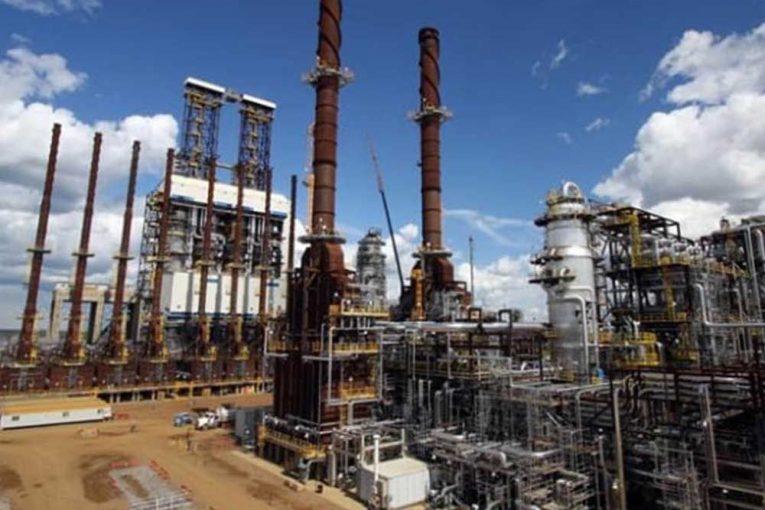
It’s hard to find bright spots in the Canadian energy sector this year, but the prospects for natural gas are looking more promising than they have for quite some time.
The
$461-million acquisition of Painted Pony Energy
by Canadian Natural Resources on Monday is a prime example of the opportunities in the gas business — for those who have the financial might to capitalize on them.
Calgary-based Painted Pony, with prime assets in the gas-rich Montney formation in northeastern British Columbia, wasn’t in the position to benefit.
It agreed instead to a takeover offer from the country’s largest petroleum producer for $111 million in cash, and the assumption of about $350 million in debt.
“We have economic projects that we can do, but there’s just no access to capital,” Painted Pony CEO Patrick Ward said in an interview.
“There is just no liquidity out there, whether it’s debt or raising capital in the public market, for oil and gas right now, especially for small and mid-sized companies . . .
“You need liquidity in our business, and liquidity is hard to come by right now.”
Formed in 2007, Painted Pony Energy now produces about 270 million cubic feet per day of natural gas per day and 4,600 barrels of natural gas liquids.
Weaker prices for gas in Western Canada during the past three years and a recent drop in prices for natural gas liquids led to lower-than-expected cash flow levels, depriving Painted Pony’s key assets of money needed to finance development.
“Canadian natural gas prices in the last couple of years were at over 20-year lows,” Ward said.
“Last summer, we were getting 50 cents per mcf (thousand cubic feet) on some days . . . This year, it’s been more around the $2 level. So people say, ‘Oh, yeah, natural gas prices improved, well they couldn’t get any worse than they were — $2 gas is OK.
“It ain’t great, but it’s OK.”
With its reserve-based bank lines up for renewal, Painted Pony had pursued assistance this year through an Export Development Canada (EDC) program that was put together by Ottawa because of the pandemic.
But the help never came, Ward said.
“Nothing has happened,” he added.
“We have to make decisions and we looked for alternative financing, everything up to and including the sale of the company. And what’s happened is the sale of the company has won.”
Facing these challenges, Painted Pony initiated a review process and accepted the offer from Canadian Natural. It must still be approved by Painted Pony shareholders in a vote, likely to be held in September.
For Canadian Natural, which produced 1.165 million barrels of oil equivalent (boe) per day in the second quarter, the deal bolsters its gas assets and production base in key operating areas, company president Tim McKay said in a statement.
The deal comes as natural gas prices in Western Canada have been more resilient this summer than in recent years, closing at $2.28 per mcf on Monday, compared to an average of $1.02 in the third quarter of 2019.
During its second-quarter earnings call last week, McKay said Canadian Natural is executing on its announced plan to add about 60 million cubic feet of gas per day of highly economic volumes.
In an interview, he said the company was increasingly looking at internal opportunities on the gas side as prices have moved up.
“The prices have improved and a big part of it is because of the U.S., with the decrease in drilling in the U.S., (there’s) less associated gas in the system. So I think that has helped all of us Canadian producers,” he said.
“If the price keeps improving, then you will look to do more opportunities.”
Canadian Natural has a history of striking at the right time, acquiring assets and companies at bargain prices. With the ongoing upheaval in energy markets from the coronavirus and falling demand, the Painted Pony deal fits the mould.
“They are deepening their gas assets at the bottom of the cycle and the Montney is one of the very few plays in all of Canada that continues to get better with time,” said Cody Kwong, an analyst with Stifel FirstEnergy.
While the outlook for Canadian gas is improving, benchmark gas prices in the U.S. hit record lows in the first half of the year, according to the U.S. Energy Information Administration (EIA).
On Tuesday, the EIA’s new short-term energy outlook projected U.S. gas prices will rise through the end of 2021, with Henry Hub spot price averaging about $2 per million British thermal units (mmBTU) this year, and $3.14 next year.
In Alberta, the outlook has also improved, coming after several difficult years when AECO spot prices during the summer months dropped below $1 per mcf.
“We are feeling much better. There is a cautious optimism that is floating through, or prevailing through, the Canadian gas producers,” said Andy Mah, CEO of Advantage Oil & Gas.
Analyst Ian Archer of consultancy IHS Markit expects North American gas prices to improve this year as demand picks up, particularly for liquefied natural gas, and as a production slowdown continues in the United States.
He expects U.S. gas prices to average between US$3 and $3.50 per mmBTU next year, with western Canadian prices about a dollar lower, although still “much stronger than we’ve seen in a couple of years.”
However, some Canadian gas companies will still be limited to how much additional production they can bring on, because of their overall indebtedness.
“I would say it’s the quiet good news story in the energy market — gas prices are better, the markets are functioning better, producers are definitely making more money on their wells,” said Archer.
“They are not runaway prices. We may see more upside in 2021. But it’s not a panacea.”
Chris Varcoe is a Calgary Herald columnist.
You can read more of the news on source
